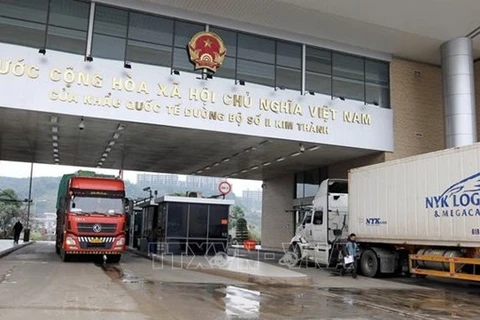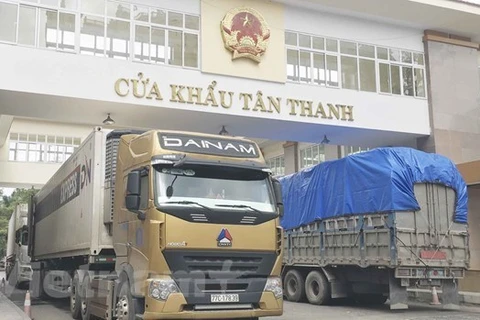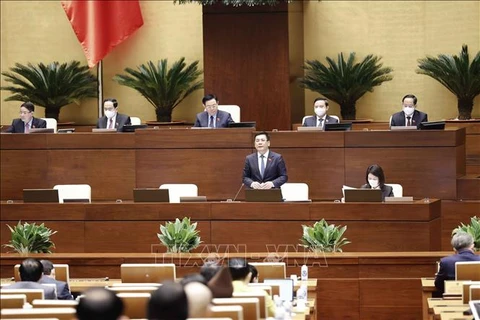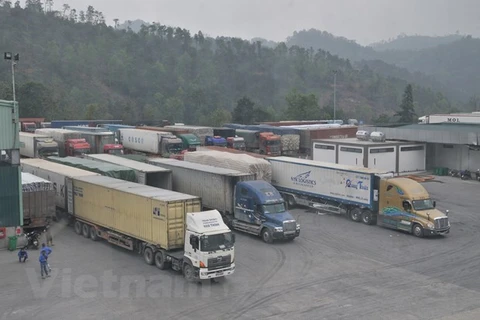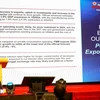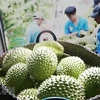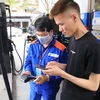Hanoi (VNA) – To deal with the congestion of agricultural exports at northern border gates, the Ministry of Industry and Trade (MoIT) and Chinese authorities have discussed solutions, including setting up COVID-19-free zones and simplifying procedures to facilitate the flow of goods.
So said Minister of Industry and Trade Nguyen Hong Dien at a question-and-answer session held by the National Assembly Standing Committee on March 16.
Setting up “green” zones
Talking about causes of the recent goods congestion, he said aside from China’s “zero COVID” policy, Vietnam’s farm produce has been exported to the neighbouring market mainly via unofficial channels and many products do not meet standards.
Given this, the MoIT has advised the Government to maintain a consistent viewpoint so that it can work with the Chinese counterpart to devise a customs clearance process.
Accordingly, it has set up COVID-free zones for goods, reached consensus on the goods handling process in border areas, and coordinated with border provinces to assist goods owners and transportation vehicles.
The ministry has provided up-to-date information for farming zones that export products so as to reduce congestion at the border gates.
The MoIT has requested goods be directed to domestic markets for consumption via both traditional and e-commerce channels. It has also asked Vietnam’s overseas trade offices to enhance business matching to expand markets, Dien noted.
As there remain many problems in the agricultural production and sale strategy, the MoIT has recommended the Ministry of Agriculture and Rural Development conduct re-planning of farming zones and work to make sure production activities align with foreign markets.
He stressed that to plan farm production, producers should answer three questions: what to farm, where to sell, and who to sell to, or risk clogging the system under the old mindset.
The minister called on localities and relevant agencies to consider re-planning farm zones and adapt production plans to market needs.
He added that the MoIT and the agriculture ministry recently organised events for overseas trade offices of Vietnam to update business associations, agricultural product manufacturers, and food producers about foreign market requirements and consumption habits. The activities were expected to help shift from small-scale production and unofficial export to shipments that follow official channels.
However, this is a long-term issue, so at first, utmost efforts must be made to resolve goods congestion at border gates, according to him.
Aligning agricultural production to markets
Dien emphasised that it is a must to align agricultural production to import market standards and demand.
The MoIT has built and submitted a draft plan on cross-border export via the official channel and a draft import - export strategy to the Government.
If the plan and strategy are approved, ministries, sectors, and localities will work together to assist farming zones, he noted, adding that by adapting to changes in markets, businesses and farmers will no longer face goods congestion at border gates.
The minister went on to say that though the domestic market is large, it is still necessary to tap into the giant Chinese market.
In the past, the majority of Vietnamese exports to China were shipped through unofficial channels. Chinese market standards for imports are becoming stricter. Therefore, Vietnamese producers must make changes to adapt to the changing Chinese export landscape.
Vietnam has 76 border gates along the border with China, including seven international, six national, and the remainders being auxiliary gates or border crossings.
The shipment of goods through international and national border gates is classified as official export, and that through auxiliary border gates and crossings as unofficial export.
Official export is conducted mainly after contracts between Vietnamese sellers and Chinese buyers have been formed with strict and long-term articles. Meanwhile, the export through auxiliary border gates or border crossings often doesn’t have contracts. Traders will bring goods to the other side of the border to meet buyers unofficially and without regulations or guidelines./.


